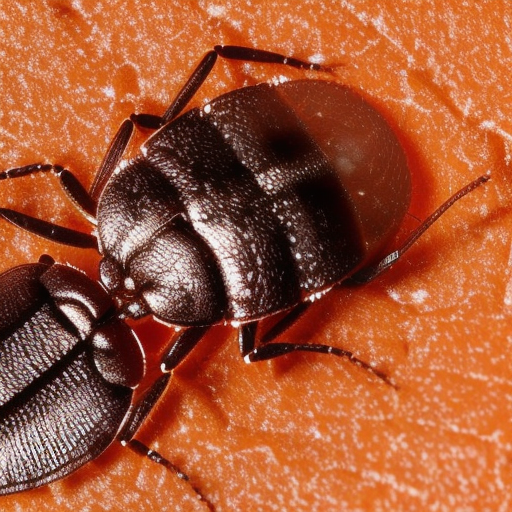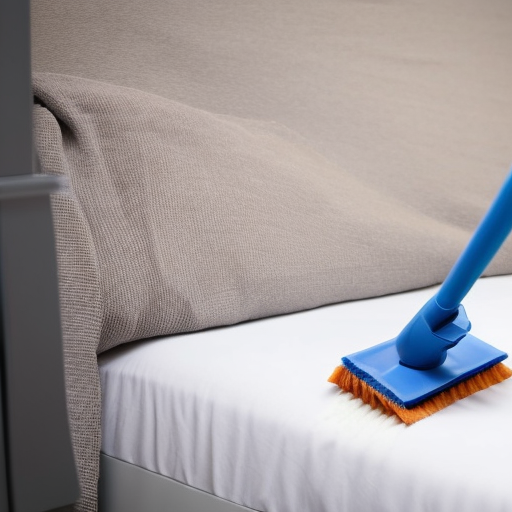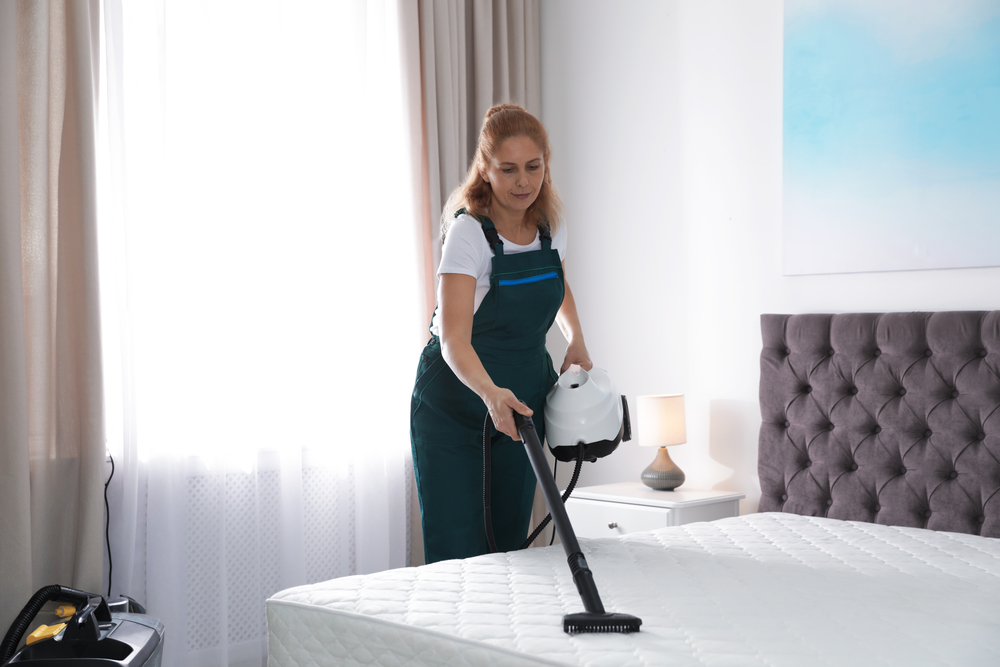Last Updated on February 10, 2023
Do you have an infestation of bed bugs in your home and don’t know what to do? Don’t worry, there is a solution – get rid of bed bugs with a steam cleaner. A steam cleaner can be used as an effective treatment against these pesky critters. Read on to find out why it’s the best way to kill them and how you should go about using one for successful eradication. From preparing your house for treatment through to post-treatment care, this guide will show you all the steps needed so that you can finally say goodbye to those unwanted guests – once and for all. Get ready: let’s learn how to get rid of bed bugs with a steam cleaner.
Table of Contents:
- What are Bed Bugs?
- Why Use a Steam Cleaner to Get Rid of Bed Bugs?
- Preparing for Treatment
- Using a Steam Cleaner to Kill Bed Bugs
- Conclusion
What are Bed Bugs?
Bed bugs are small, wingless insects that feed on the blood of humans and animals. They measure about 1/4 to 3/8 inch in length, have a flat oval shape, and range in color from light brown to reddish-brown. Bed bugs can be found anywhere people sleep or rest—in homes, hotels, dormitories, hospitals, movie theatres—and even on public transportation like buses and trains.
Appearance
Bed bugs have six legs with two antennae at the front of their head. Their bodies are segmented into three parts: head (cephalothorax), thorax (middle section) and abdomen (rear). Adult bedbugs have an elongated body shape that is wider than it is long.
Habitat
Bed bugs prefer warm temperatures between 70°F – 80°F but can survive in colder climates if they find a warm spot to hide, such as behind baseboards or inside furniture crevices. They usually stay close to where people sleep or sit for extended periods of time so they can easily access food sources when needed.

Lastly, you should look for tiny white eggs around mattresses and box springs, which could indicate an active infestation nearby since adult female bedbugs lay hundreds of eggs over their lifetime.
Bed bugs are small, parasitic insects that feed on human blood. They can be difficult to get rid of, but using a steam cleaner is an effective and chemical-free way to eradicate them from your home. Let’s explore why this is the case in more detail in the next section.
Why Use a Steam Cleaner to Get Rid of Bed Bugs?
Bed bugs are one of the most common pests in UK households. They can be found in mattresses, furniture, and carpets, making them difficult to get rid of without the right tools. One effective way to eliminate bed bugs is by using a steam cleaner.
Steam cleaners use hot water vapour to penetrate fabrics and crevices where bed bugs hide. The high temperature kills both adult bed bugs and their eggs on contact, eliminating them from your home for good. Steam cleaning also has other benefits that make it an ideal choice for getting rid of these pesky pests:
1) It’s non-toxic – Unlike chemical treatments which may contain harsh chemicals or pesticides, steam cleaning uses only natural ingredients like water and heat so it’s safe for people with allergies or sensitivities as well as pets and children.
2) It’s fast – Bed bug infestations can spread quickly if left untreated, but steam cleaning gets rid of them quickly with minimal effort required from you. Plus, since there are no harsh chemicals involved, you don’t have to worry about waiting around for long periods after treatment before re-entering the room.
3) It’s cost-effective – Chemical treatments often require multiple applications over time, which can add up quickly, but with steam cleaning, all you need is one session to get rid of those pesky critters. Plus, since there are no hazardous materials involved, you won’t have to pay extra fees associated with disposal either.
4) It’s versatile – Not only does a steam cleaner kill bedbugs, but it can also help remove dirt and grime from surfaces such as carpets or furniture too. This makes it a great multi-purpose tool that will save you time (and money.) when tackling any number of household chores at once.
Overall, using a steam cleaner is an effective way to get rid of bedbugs without having to resort to toxic chemical treatments or expensive extermination services. With its ability to reach deep into fabrics and crevices where these pests hide, combined with its versatility in tackling other household tasks too – this handy device should definitely be part of your arsenal against unwanted visitors.
Using a steam cleaner to get rid of bed bugs is an effective and non-toxic way to eliminate these pests. Now that you know why it’s important, let’s move on to the next step: preparing for treatment.
Preparing for Treatment

Before using a steam cleaner to get rid of bed bugs, it is important to prepare the area for treatment. This includes cleaning and vacuuming the area thoroughly. Start by removing all linens, blankets, and pillows from beds and couches in the affected room or rooms. Place these items in plastic bags that can be sealed tightly before washing them in hot water with detergent. Vacuum carpets, furniture, baseboards, curtains and any other areas where bed bugs may be hiding. Pay special attention to cracks or crevices around windowsills or door frames, as these are common places for bed bugs to hide. After vacuuming up any visible debris on floors or furniture surfaces, use a damp cloth to wipe down those same areas as well as walls if necessary. Make sure you dispose of your vacuum bag after each use so that you don’t risk spreading any live bedbugs elsewhere in your home.
Once you have cleaned the area thoroughly, it is time to move on to using a steam cleaner specifically designed for killing bedbugs. Such a machine should have an adjustable temperature control feature which allows you to adjust the heat level based on what type of surface you are treating (e.g., wood vs fabric). When using this type of machine, make sure that all surfaces come into contact with hot steam and also ensure that no moisture remains behind when finished steaming; this will help prevent mould growth which could lead to further issues down the line.
Using a Steam Cleaner to Kill Bed Bugs
Once you have prepared your area for treatment with a steam cleaner, it’s time to begin killing those pesky bed bugs. Start by setting your machine’s temperature dial between 90-100°C (194-212°F). This high heat will ensure that any adult bedbugs come into direct contact with the hot water vapour and die instantly upon contact. Make sure not to leave out any nooks or crannies while steaming; move slowly around each room, ensuring every surface has been treated properly – including furniture legs, carpets edges etc., paying particular attention to seams in mattresses/cushions/upholstery etc. It should take approximately 10 minutes per square meter of space to be treated with a steam cleaner – but if possible, allow more time just in case some stubborn pests remain hidden away.
After completing your treatment session with the steam cleaner, it is essential that you empty its tank immediately after use. This prevents any remaining moisture from becoming stagnant, which could cause mould growth over time – something nobody wants. Additionally, check all areas again after 24 hours just in case there were some survivors who managed to escape initial extermination attempts; repeat treatments may be necessary until no further signs of activity are detected.
Conclusion
Using a steam cleaner to get rid of bed bugs is an effective and efficient way to eliminate these pests from your home. By following the steps outlined in this guide, you can be sure that you are taking all the necessary precautions when treating for bed bugs with a steam cleaner. With proper preparation and treatment, you can rest assured, knowing that you have done everything possible to get rid of bed bugs with a steam cleaner.
Paul is the type of person who never met a problem he couldn’t fix. He can always be found tinkering with something in his house, even if it isn’t broken! His tips and tricks are often shared on our site. He’s the one you call when something breaks because he has been known to improvise fixes for everything from leaky faucets to malfunctioning dryers.

